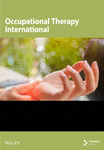The effects of traditional and computer-aided instruction on promoting independent skin care in adults with paraplegia
Abstract
This study aimed to explore the viability of using computer-aided instruction (CAI) as an educational tool for promoting independent skin care in adults with paraplegia. There is a need to identify effective intervention strategies that provide health education for skin care management and the prevention of pressure ulcers for individuals with spinal cord injuries (SCI). There continues to be tremendous financial and personal costs associated with the treatment of pressure ulcers and the prevalence of skin breakdown among the SCI population, despite traditional educational methods. The methodology used in this study evaluated to what degree CAI assisted individuals with paraplegia to acquire knowledge and demonstrate skills necessary for optimal skin care. Results were obtained using a multiple baseline across subjects approach including an ABC (for two subjects) and an AC (for one subject) single case experimental design. Results indicated that CAI was more effective than traditional educational methods in increasing the initiation and performance of pressure-relieving techniques. Limitations in this study include the possibility of carryover effects, relatively short time periods for baseline and treatment conditions, and extraneous variables that were difficult to control such as the participants' level of motivation and cooperation. Further study using a larger group design with a control group is recommended to explore the effects CAI has on promoting optimal skin care among adults with paraplegia. Copyright © 2003 Whurr Publishers Ltd.




